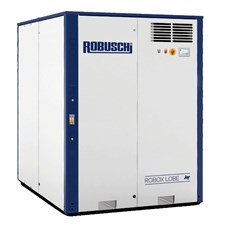Positive Displacement (PD) Blowers
Positive Displacement Blowers, commonly referred to as PD blowers or rotary air blowers, are widely used for their efficiency in air and gas conveyance. Positive Displacement Blowers are used in many applications and industries from transporting air and gases to pneumatic conveyance of materials, typically powders and granulated materials.
These two rotating lobed elements, housed within a chamber known as the conveying chamber, rotate in opposite directions, effectively moving the gas or air through the unit and delivering a constant airflow that is independent of the discharge pressure conditions.
How do Positive Displacement Blowers work?
There are two types of positive displacement blowers; lobe and screw.
Rotary Lobe Positive Displacement Blower
A Positive Displacement Lobe Blower transfers a consistent volume of gas from the inlet to the discharge point, operating on the isochoric compression principle, also known as external compression. In this process, gas or air is moved from atmospheric conditions into a system with a set resistance (back pressure), resulting in a pressure increase. However, due to this mechanism, lobe blowers are not classified as compressors. The volume of gas handled by the blower is determined by the design of its casing and rotating components.
Screw Positive Displacement Blower
In a Positive Displacement Screw Blower, rotors rotate in opposite directions and maintain precise synchronization through timing. As the rotors mesh, they create a series of working chambers between themselves and the casing wall.
Gas is drawn from the intake (suction) side and becomes trapped between the rotors and the casing radially, as well as between the cover axially. The gas is then conveyed to the discharge side, where the working chamber gradually decreases, compressing the air or gas. This internal compression ensures a consistent, non-pulsating airflow, reducing vibration and maintenance needs, ultimately extending the blower's lifespan.



